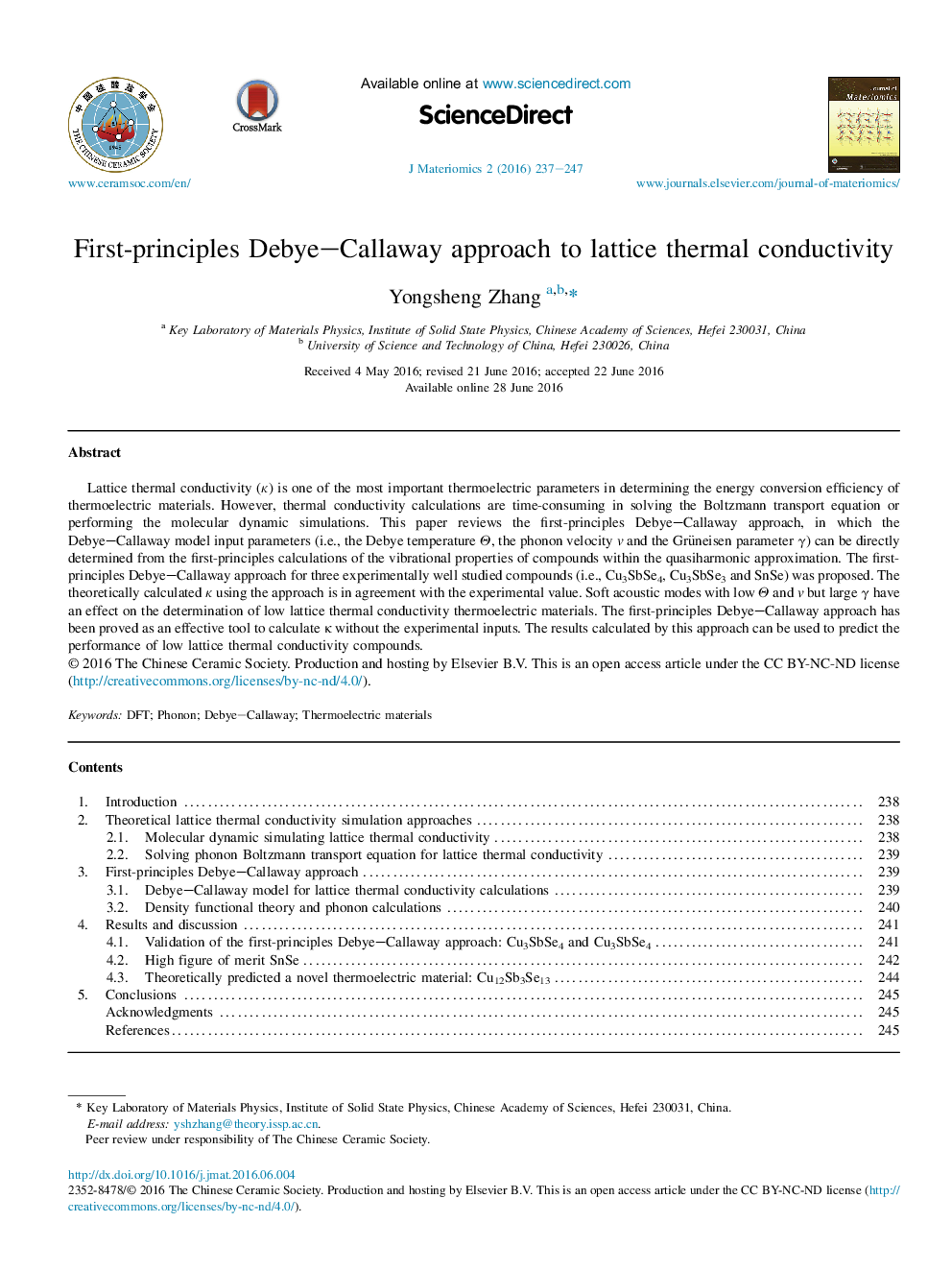| Article ID | Journal | Published Year | Pages | File Type |
|---|---|---|---|---|
| 1515104 | Journal of Materiomics | 2016 | 11 Pages |
Lattice thermal conductivity (κ) is one of the most important thermoelectric parameters in determining the energy conversion efficiency of thermoelectric materials. However, thermal conductivity calculations are time-consuming in solving the Boltzmann transport equation or performing the molecular dynamic simulations. This paper reviews the first-principles Debye–Callaway approach, in which the Debye–Callaway model input parameters (i.e., the Debye temperature Θ, the phonon velocity v and the Grüneisen parameter γ) can be directly determined from the first-principles calculations of the vibrational properties of compounds within the quasiharmonic approximation. The first-principles Debye–Callaway approach for three experimentally well studied compounds (i.e., Cu3SbSe4, Cu3SbSe3 and SnSe) was proposed. The theoretically calculated κ using the approach is in agreement with the experimental value. Soft acoustic modes with low Θ and v but large γ have an effect on the determination of low lattice thermal conductivity thermoelectric materials. The first-principles Debye–Callaway approach has been proved as an effective tool to calculate κ without the experimental inputs. The results calculated by this approach can be used to predict the performance of low lattice thermal conductivity compounds.
Graphical abstractThe calculated lattice thermal conductivities using the first-principles Debye–Callaway approach are in reasonable agreement with the experimental results. Soft acoustic modes with low Θ and v but large γ play vital roles in the determination of low lattice thermal conductivity of thermoelectric materials. The first-principles Debye–Callaway approach is proved as an effective tool to calculate the lattice thermal conductivity. The results calculated by this approach can be compared to the experimental results and used to predict the low lattice thermal conductivity of the compounds prior to the experiments.Figure optionsDownload full-size imageDownload as PowerPoint slide
